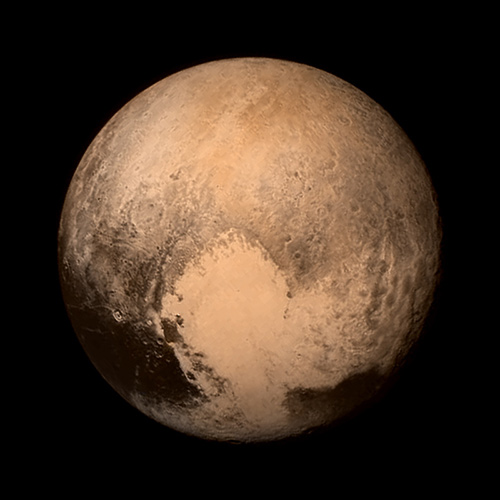
Pluto, captured during a flyby on July 13, 2015 by the New Horizons spacecraft (NASA/Johns Hopkins University Applied Physics Laboratory/Southwest Research Institute)
Pluto is the largest known member of the Kuiper Belt, which contains an estimated 100,000 dwarf planets and is located just outside of Neptune’s orbit. This belt contains many worlds such as Pluto that have active weather, geology, and internal heat generation.
The New Horizons mission, which flew by Pluto in 2015, revealed a number of surprises: nitrogen glaciers (including a gigantic one on the equator), vast fields of organic compounds, ice volcanoes, geological hints that the world is relatively new, and evidence pointing to an internal ocean of liquid water. Michael Summers, a professor of planetary science and astronomy at George Mason University, describes how the New Horizons mission revolutionized how we view the most distant worlds in our solar system.
Series Information
The Grand Tour of the Solar System series treks to the Sun and the four inner terrestrial planets before traveling outward to the asteroid belt, four Jovian planets, and beyond. At each session, a professional astronomer explores a solar system body, presenting the latest research.
Following the talk and a question-and-answer period, Peter Plavchan, a professor of physics and astronomy at George Mason University, brings that night’s sky right into participants’ living rooms via remote control of the university observatory, weather permitting.
Learn about the Series
Additional Grand Tour of the Solar System Programs
General Information
